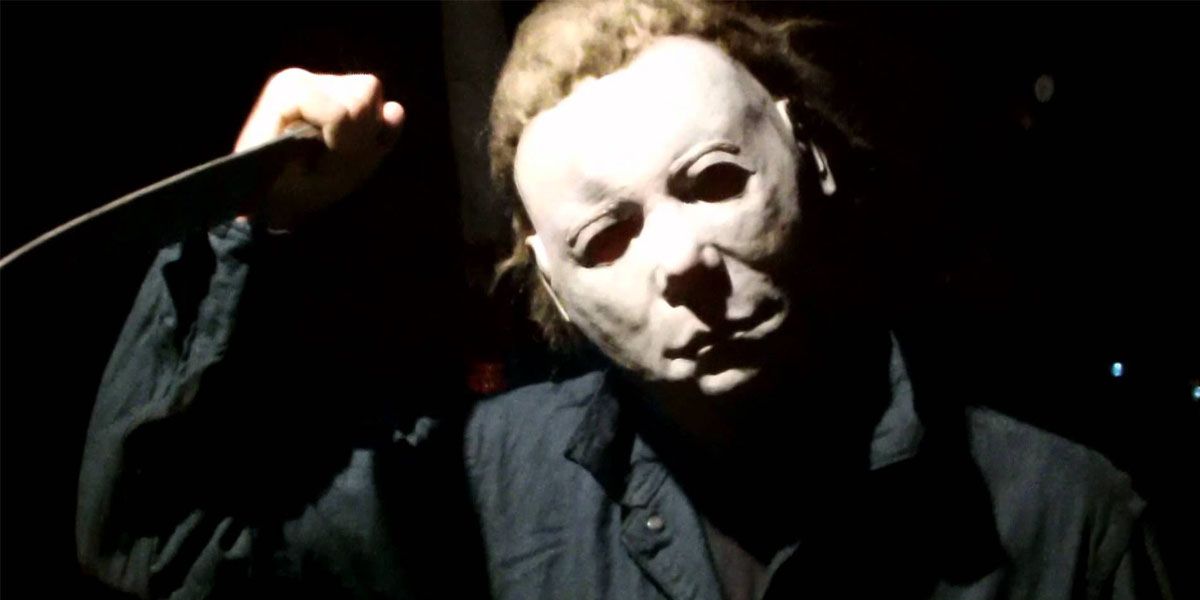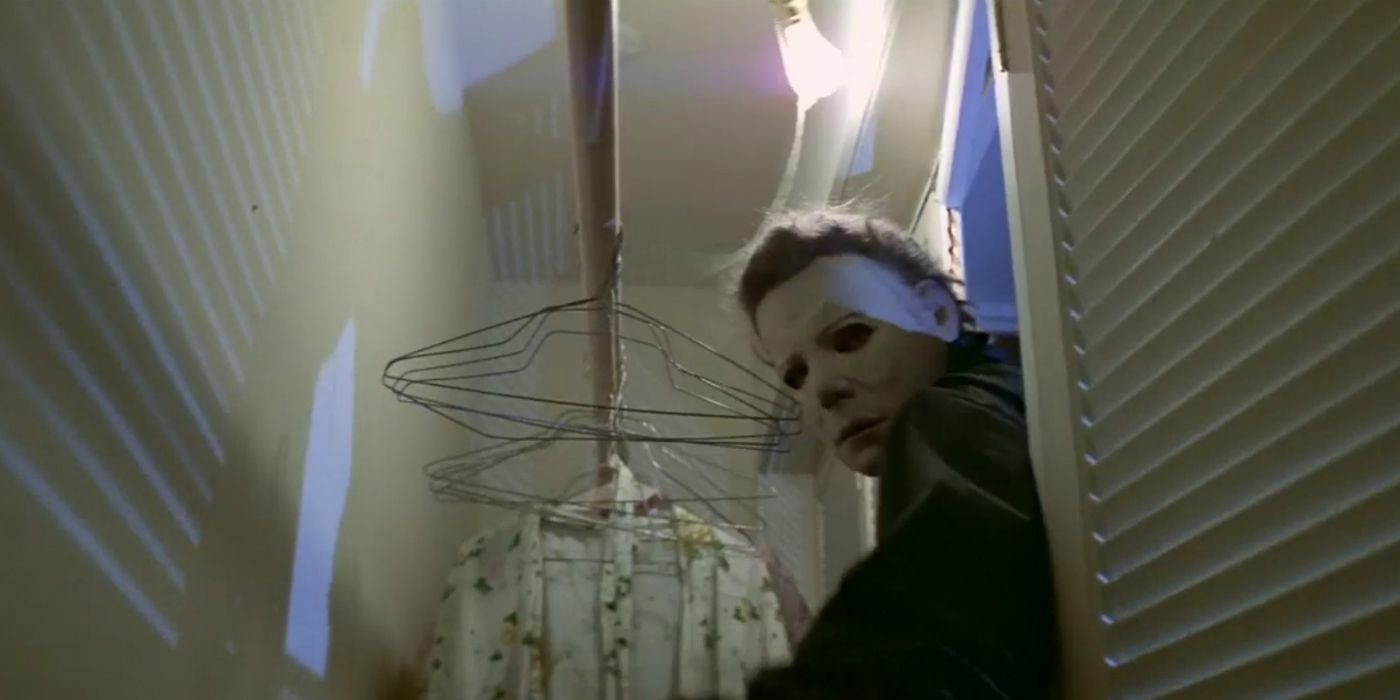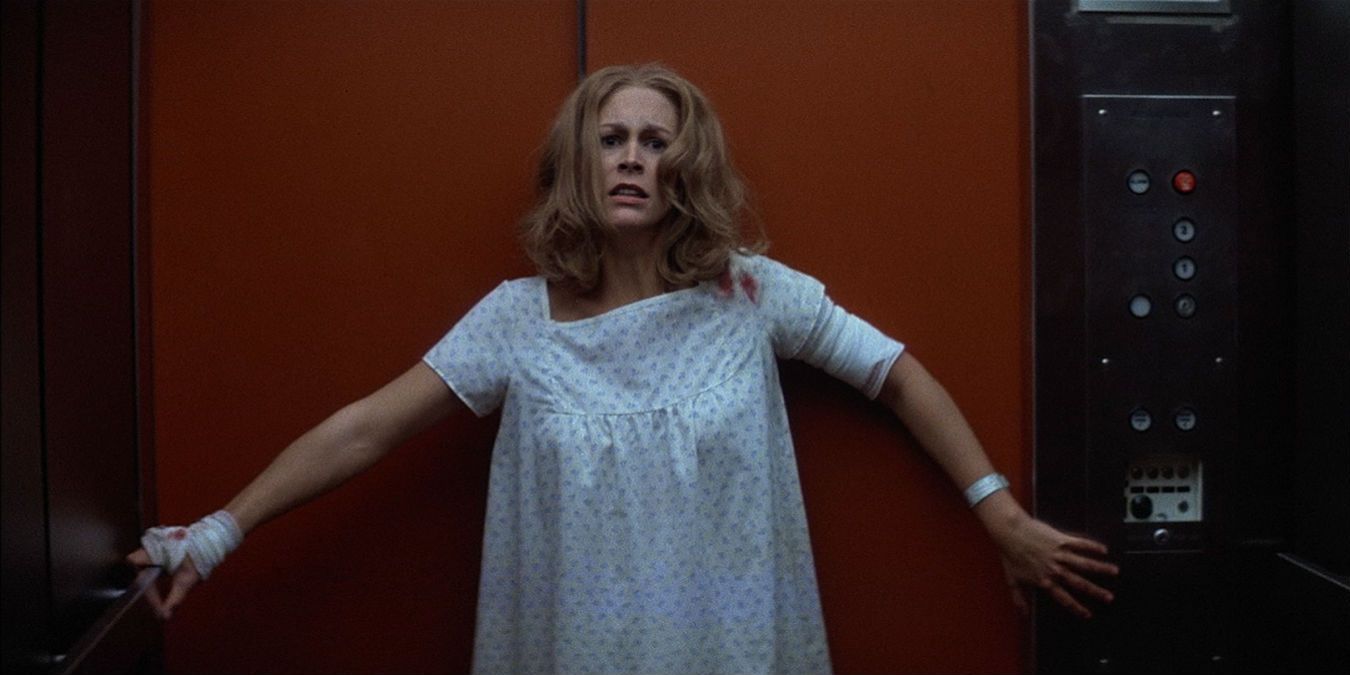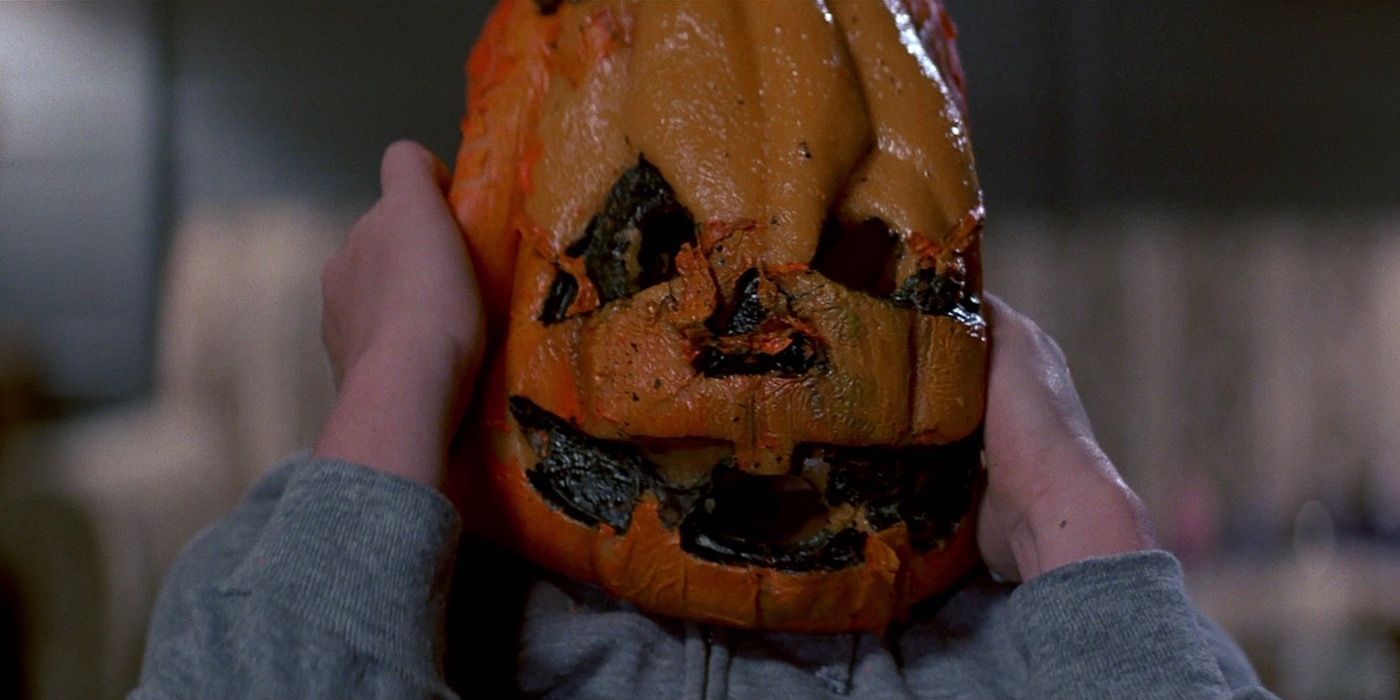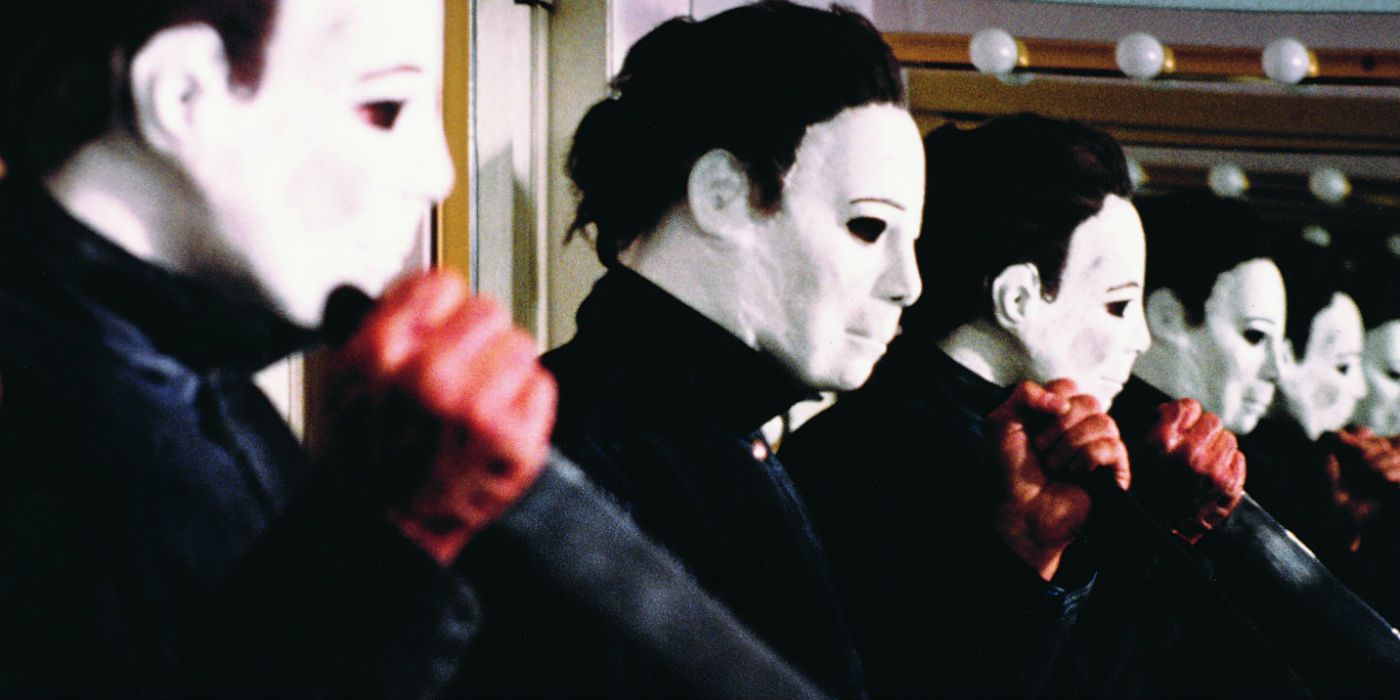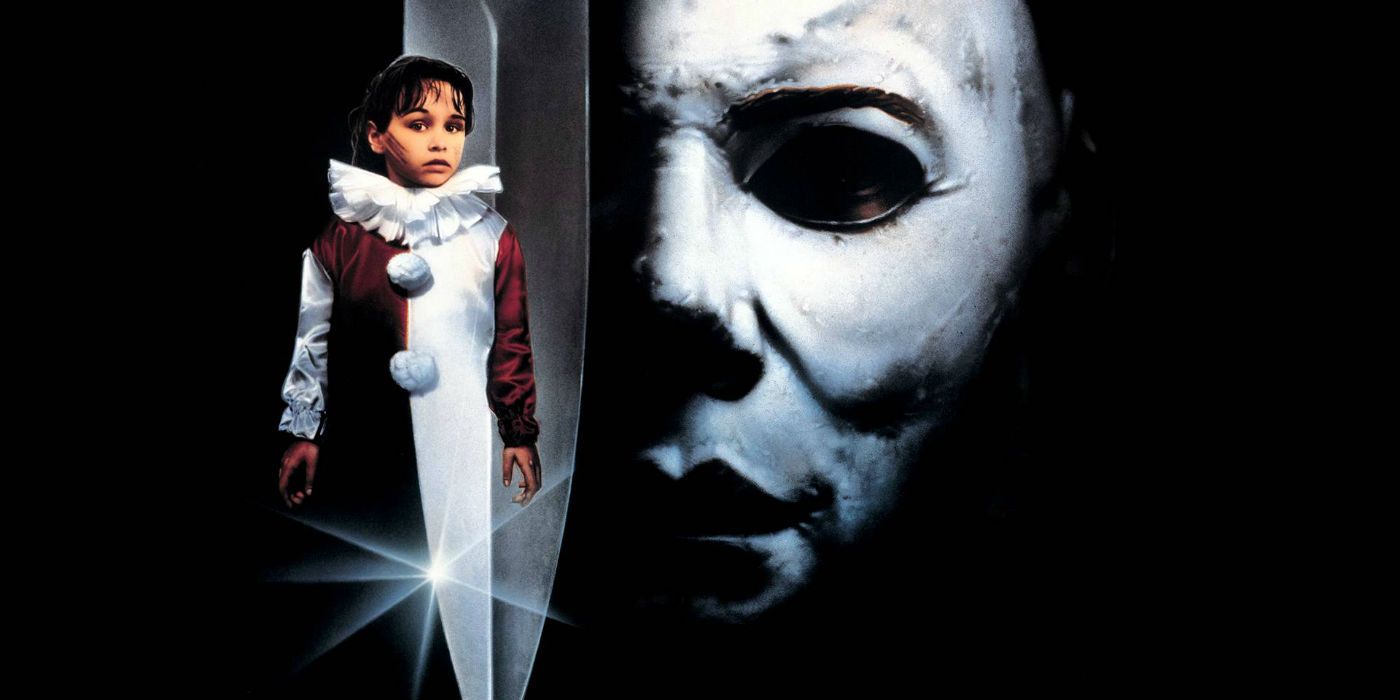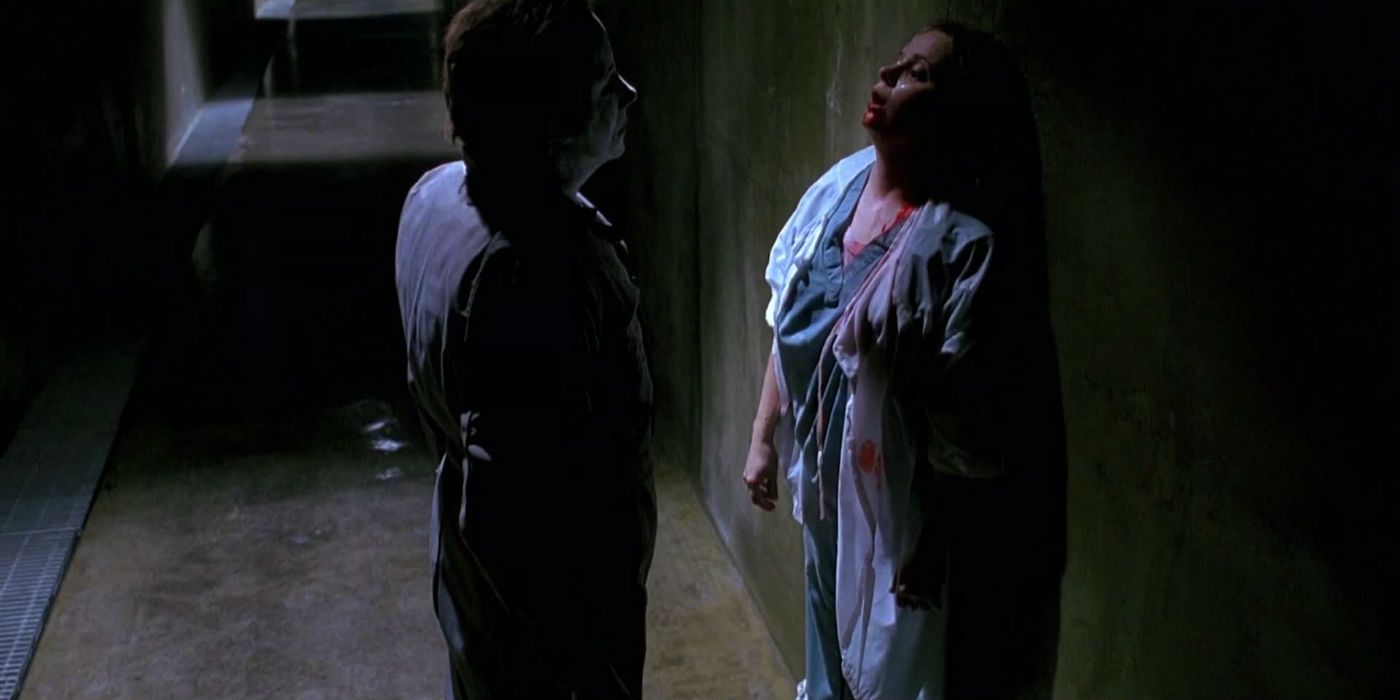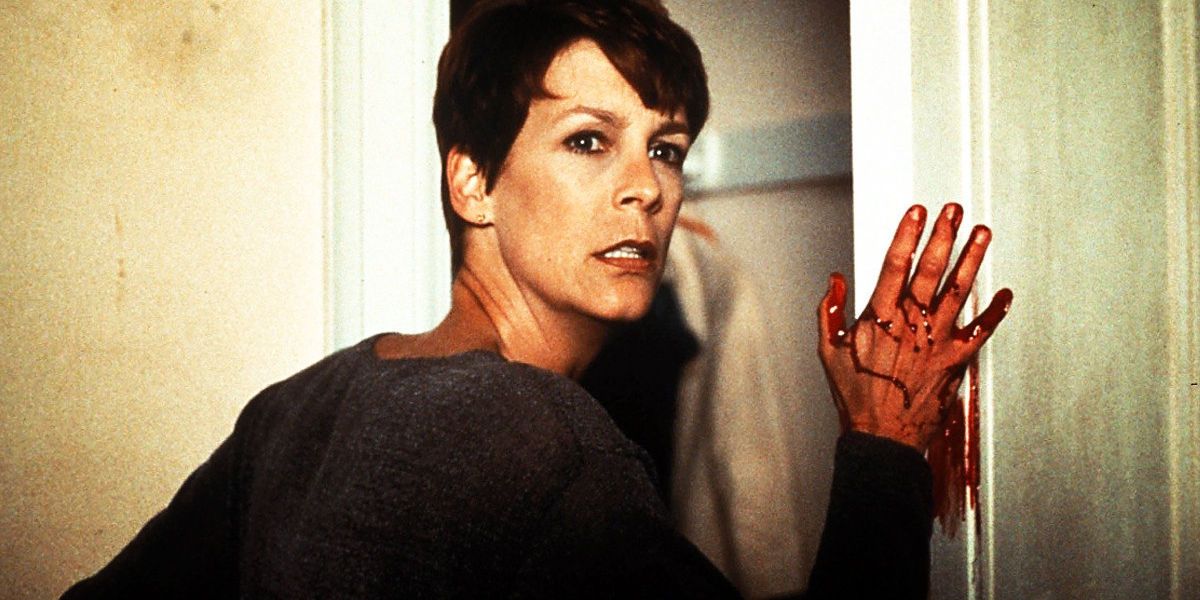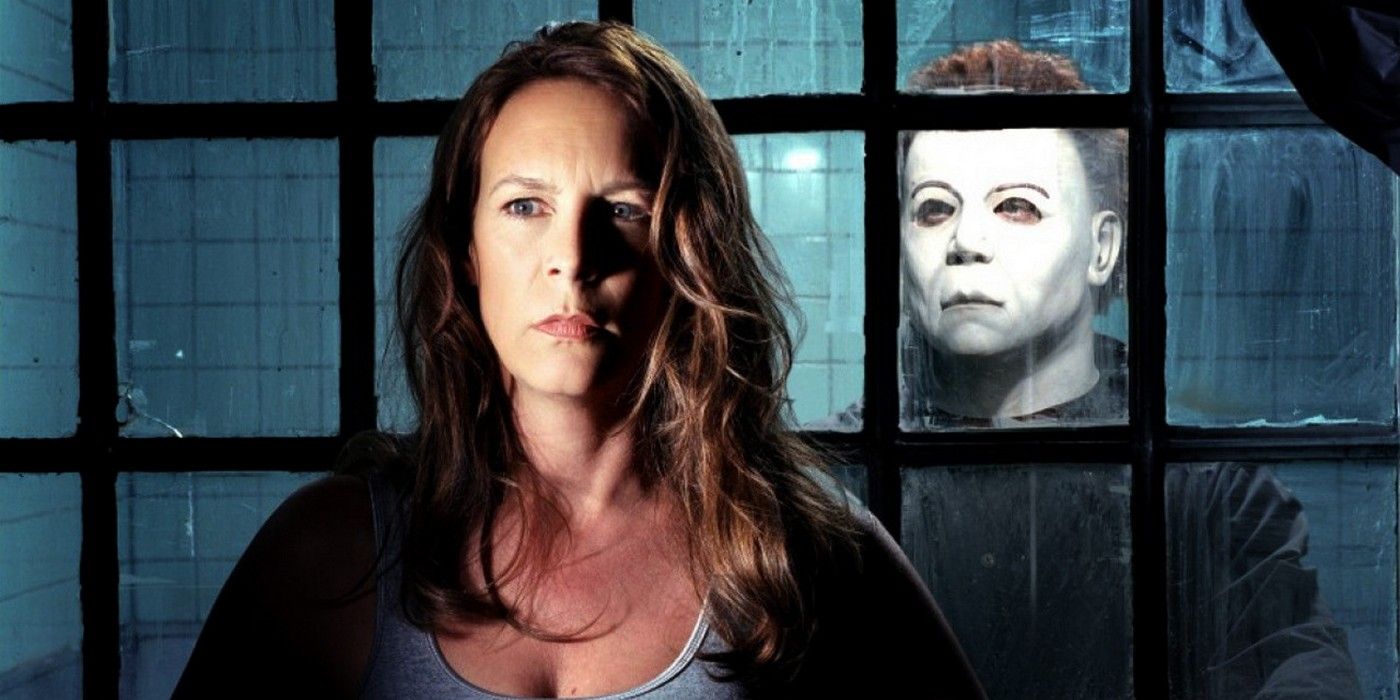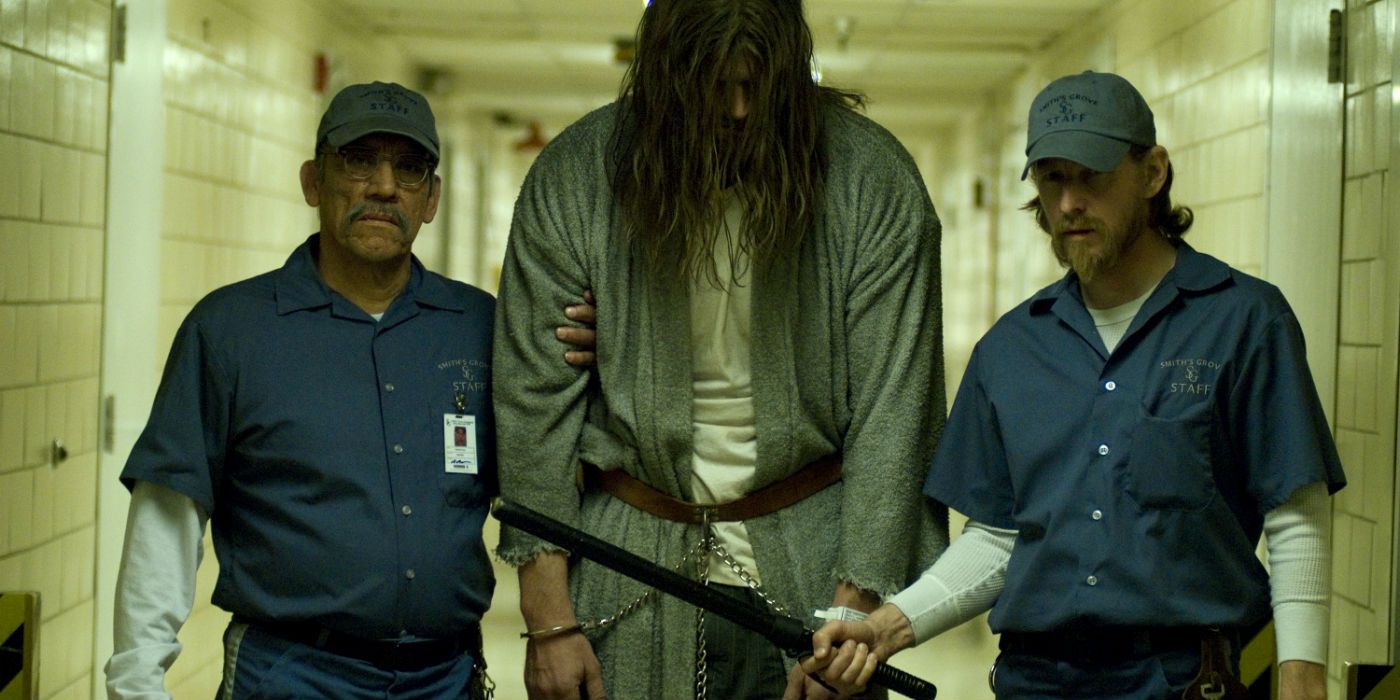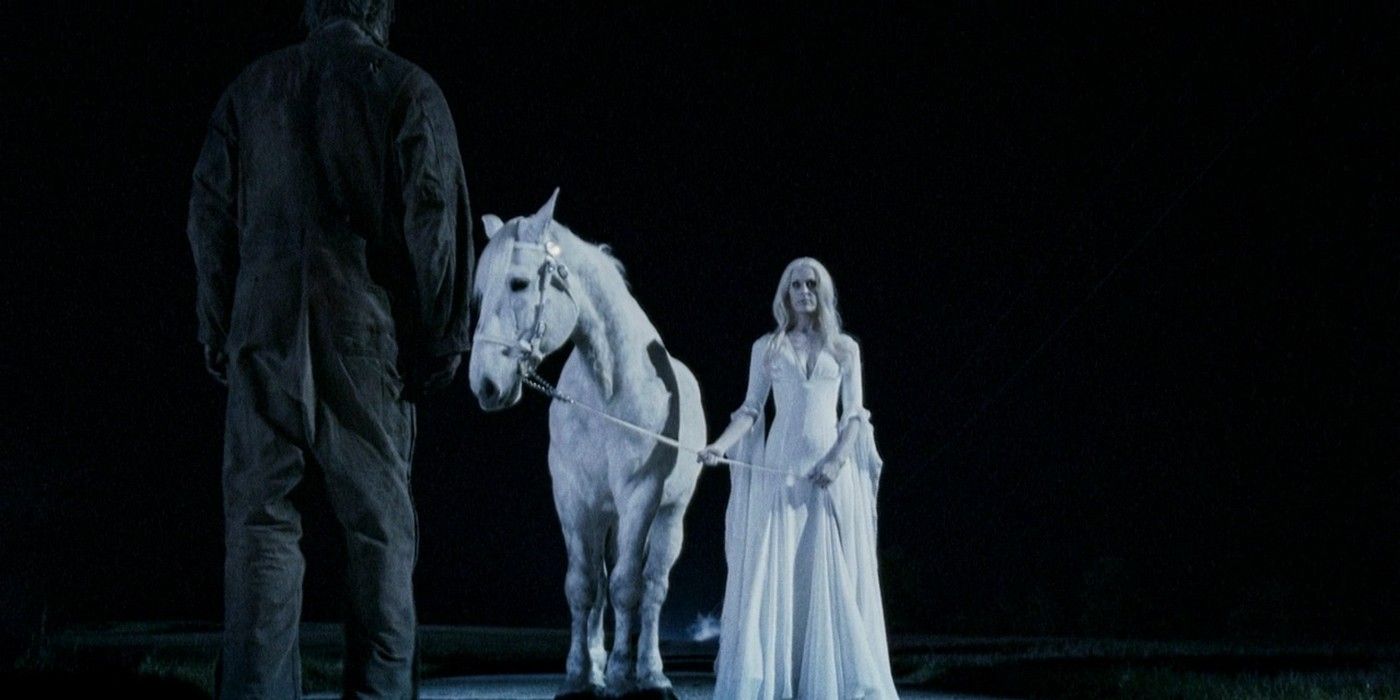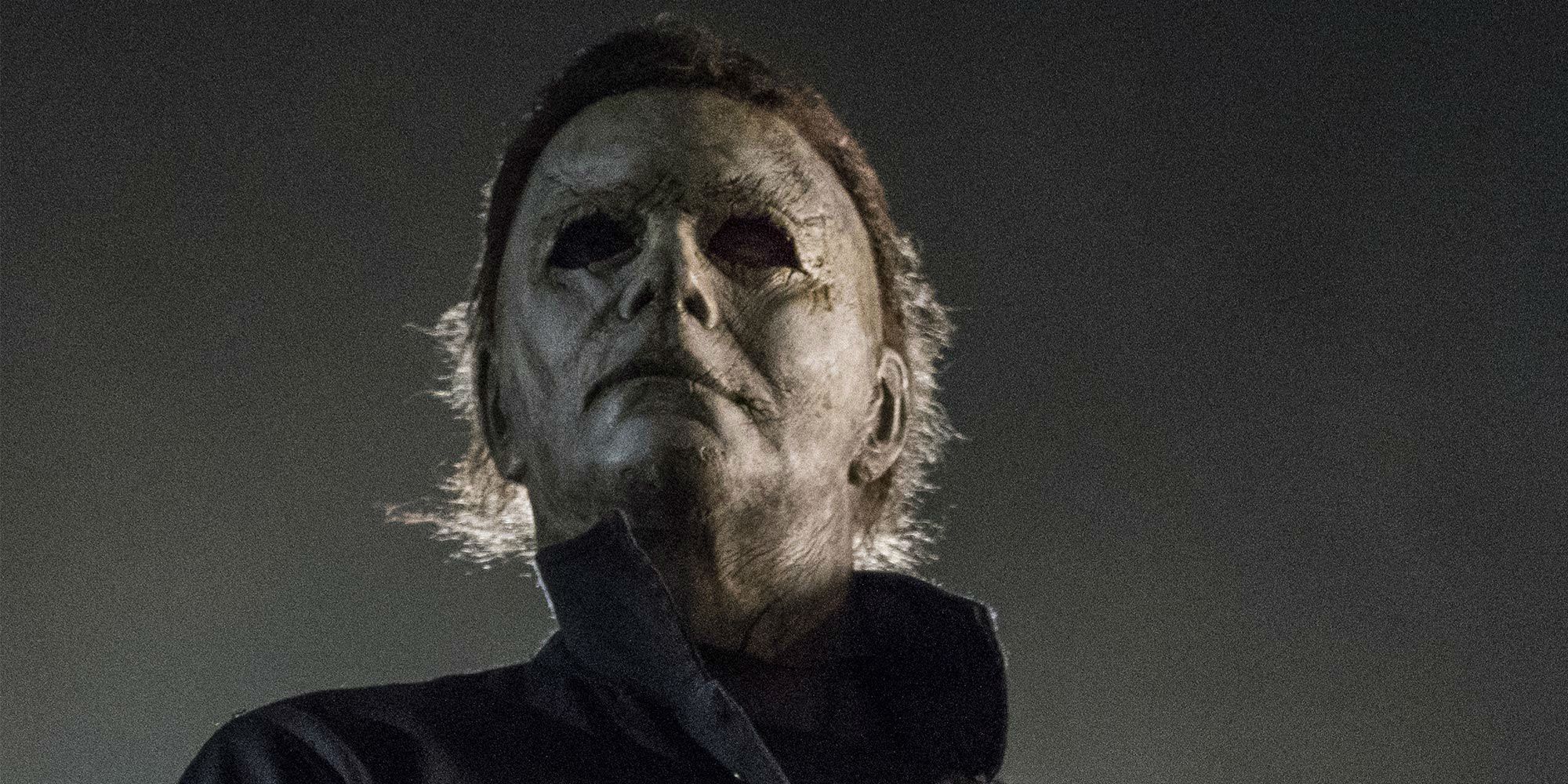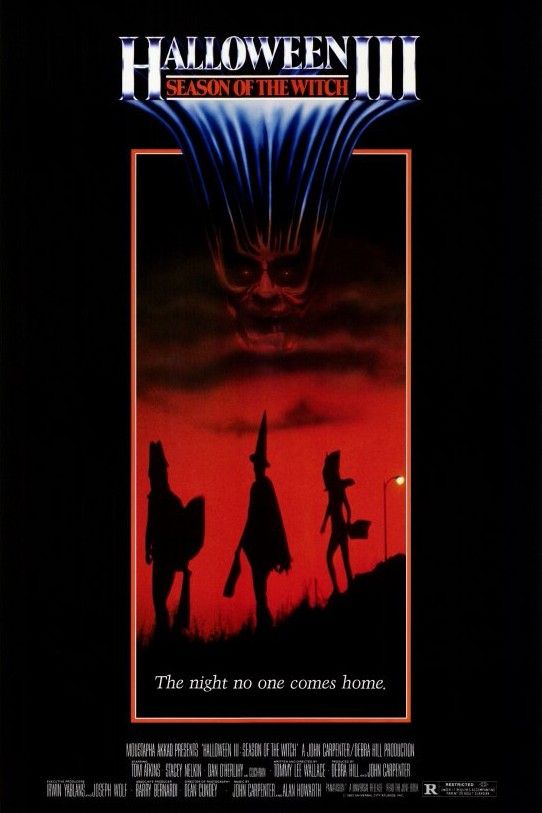This October sees the arrival of Halloween Kills, the first of two announced sequels to 2018's successful Halloween reboot, which was the first new Halloween movie in nearly a decade. Director David Gordon Green is returning to helm the sequel, while Jamie Lee Curtis is back again as Laurie Strode, and franchise creator John Carpenter will once again executive produce and compose the score. Michael Myers, the iconic knife-wielding killer of the franchise, has had a lot of misadventures across his eleven movies: tranquilized, set on fire, stabbed, ran over, electrified and injected with acid, Myers has proven relentless over the decades, earning his status as a true horror legend.
Despite some of his films not quite having the same enduring quality as the original, Myers has long been one of the most legitimately terrifying members of the modern horror canon. Nigh on unstoppable, the mask-wearing killing machine is defined by only one characteristic: find Laurie Strode, or another member of his family. Beginning with 1978's Halloween and moving right through into the 1980s, 1990s, and 2000s, Michael has stabbed and stalked his way through a multitude of victims in his quest for his estranged relatives. Along the way, he's become a living embodiment of a very particular amalgamation of terror. At once, Myers very explicitly represents fears of obsession and persecution along with the more abstract idea of never being able to live down one's past. No matter what his targets do, no matter where they go, the threat of Michael Myers' return is always looming and inescapable.
As a writer, director, composer and producer, John Carpenter built his career on distinctive films with iconic characters, of which Halloween may be his finest. Co-written and co-produced with Debra Hill, it was the kind of production Carpenter made look so easy: a concoction of tropes and stereotypes combined into something that felt fresh and radical. The core principles are so malleable it could be made in any era and still work. Truly screwing up a Halloween movie is difficult - all that's necessary is a Strode at one end and Michael at the other with some obstacles in-between. Myers has remained ill-defined enough too that filmmakers can have all the fun they want with how he kills and how he's hurt. He's a blue jump-suit clad mystery, and his finest outings have decidedly played into that rather than think too much about it - here's a trip back through the entire Halloween franchise to date.
Halloween (1978)
There's very little that can be said about the first Halloween that hasn't been said a million times before. It's a classic for a very good reason. John Carpenter's third directorial effort is a masterclass in tension and dread: The slow, methodical glimpses of Michael, the sheer violence of his methods as a killer - all brought together with a creepy sense of cinematography and Carpenter's brilliantly gloomy score. Alongside the instantly recognizable theme, this movie introduces us to Michael Myers as a sociopathic child who kills his older sister, for which he is committed to a sanitarium. At age 21 Myers escapes, robbing a car and his jumpsuit and mask combo in order to wreak havok on an unsuspecting Haddonfield to find his sister, Laurie Strode, played by Jamie Lee Curtis.
Halloween re-defined the slasher genre and became a cornerstone of modern horror, with countless later movies borrowing from or even outright copying it. There's a harshness to it that could come across as crude or sadistic, but Carpenter succumbs to neither, instead creating a brutal honesty for the harrowing nature of what the victims of his films go through. The scene in which Laurie locks herself in a closet while Michael stabs his way in to get her is still difficult to sit through as her desperation and his unflinching determination are played out to their fullest. Horrifying in a way rarely managed.
Halloween 2 (1981)
Both Carpenter and Hill returned to pen the first Halloween sequel, with newcomer Rick Rosenthal as director. A direct continuation of the first, Halloween 2 employs much of the same darkness and tension but suffers from a looser story and weaker pacing. Michael is portrayed to be even more ruthless this time around, tearing through a hospital in order to get to Laurie. Dr. Loomis, Myers' child psychologist, plays a larger role as he and other authorities pursue Michael and attempt to find him before he does more damage.
Laurie and Michael's familial connection is revealed with very little actual heft and barely referenced again. Mostly the movie is concerned with trying to up the ante of the original, and in doing so becomes an overblown exaggeration of itself. Very few of the kills have any kind of substance to them and one of the biggest moments, in which a wrong suspect is killed in an explosion, comes across as needlessly profane and tangential to the overall narrative. The final sequence does go some way toward salvaging the film, however, with Michael being set aflame in one of his most memorable deaths of the series.
Halloween 3: Season of the Witch (1982)
Moving away from slashers, it was thought that Halloween could become a yearly anthology franchise with a new unique instalment every October. So, for the third movie, Michael and Laurie were completely forgotten in favor of a fantasy/sci-fi pseudo-fairy-tale about a company that tries to use children's masks to summon a plague of insects and snakes on Halloween night.
Directed and written by Tommy Lee Wallace, with Carpenter and Hill still involved as producers, Halloween 3: Season of the Witch is a hodge-podge of various stylistic choices popular in horror during the early 1980s. The story merges magic with elements of science fiction and over-arching ideas of the occult and corporate control as the owner of a small town mask-making factory tries to use his masks to perform a mass sacrifice with the town's children in order to bring about a new age of witchcraft. After a small town shop-owner who figures out the evil plot is assassinated, his grand-daughter and doctor come together to pick up the investigation, discovering an android empire along the way. Though a far-cry from the previous two, Season of the Witch works as a piece of standalone 1980s cult cinema. The story is over-wrought but it doesn't take itself too seriously and the cast, led by Tom Atkins and Stacey Nelkin, are perfectly serviceable in their roles. Despite being something of a failed experiment, it's a commendable effort all the same.
Halloween 4: The Return of Michael Myers (1988)
Six years later, in 1988, Michael would make his comeback. By this point horror was leaning toward a more schlocky, comedic approach with movies like Evil Dead and Gremlins. The Halloween series big return did not waiver, instead sticking to being an earnest slasher. The result was lackluster, with a hackneyed setup of Michael coming back to Haddonfield to hunt Laurie and getting side-tracked by her six-year-old daughter, Jamie.
There are four writers credited for Halloween 4 and it's quite apparent. Jamie is living with a foster family and Laurie's absence goes generally unnoticed, while Donald Pleasance's Dr. Loomis acts as the major recurring character aside from Myers. News of Michael's return inspires a lynch mob that ultimately goes nowhere, while the one set-piece that may have made the movie interesting – the protagonists accidentally locking themselves in a house with Michael – is dropped in favor of a chase through the local high school. Combined with a completely bizarre ending, this entry was not a second coming fans had hoped for.
Halloween 5: The Revenge of Michael Myers (1989)
With a strong box office showing, Return gave way to the Dominique Othenin-Girard-directed Halloween 5: The Revenge of Michael Myers the following year, creating the middle-child of a second Halloween trilogy. Sticking with Jamie, Laurie still in parts unknown, the young girl has become a mute and is now in psychiatric care. Dr. Loomis finds out she's developed a telepathic link with Michael, confirming he's still alive. Meanwhile, the jump-suit sporting sociopath kills a hermit who was caring for his unconscious body after the events of Halloween 4 and heads back toward Haddonfield.
Telepathy aside, Revenge is a by-the-numbers retread of various slasher tropes with some significance to the overall plot of the series. The pivotal chase occurs in the old Myers family home, a setting that had gone largely unexplored until now. There is some character development too as Jamie tries to appeal to Michael's humanity in a brief moment, an endeavor that fails despite what seemed like some form of connection. Muddled and uninspired, it ostensibly brought the series to a complete halt for years.
Halloween 6: The Curse of Michael Myers (1995)
Records of a screenplay for Halloween 6 go back as far as 1990, with writer Daniel Ferrands submitting a treatment that would bridge the series back to the first two. Ferrands is credited on the final film, but it's believed that its script is an amalgamation of his and several other writers' ideas. Legal battles and production delays halted progress for years, with the film beginning production in 1994 under director Joe Chappelle, followed by lengthy reshoots in 1995. Embracing the mysticality that had become commonplace in recent cult hits like Evil Dead and Gremlins, Halloween 6 introduces a cult to finish the story of Jamie and Michael while also providing an origin story for Myers' seeming invincibility. Jamie and Michael are kidnapped by said cult and held captive for six years, Jamie impregnated. After she escapes and leaves her baby in a bus station, Michael gives chase and kills Jamie.
A teenage Tommy Doyle (played by Paul Rudd), whom Laurie Strode was babysitting in the first Halloween, finds Jamie's baby and takes him in. Obsessed with Myers, Tommy has developed a theory that the masked menace is cursed with having to kill a family member every Halloween. Finding out that the baby is a relation with the help of Dr. Loomis, he figures the child will be the last victim and the two endeavor to protect it. There's no polite way to put it: The Curse of Michael Myers is a mess. It's convoluted and filled with plot-holes, only adding more questions to the overall mystery of Michael Myers and Laurie Strode. The cult storyline would not be revisited and other than its status as a "before they were famous" movie for Rudd, this sequel is best left forgotten. It would be Donald Pleasance's last time reprising Dr. Loomis before his passing.
Halloween H20: 20 Years Later (1998)
Pulling out all the stops for the 20th anniversary of the franchise, Jamie Lee Curtis returned as Laurie Strode in what was a return to Halloween's original storyline. Directed by Steve Miner, whose credits include the first two Friday the 13th sequels, H20 was a welcome by-the-numbers slasher flick in the vain of the first two Halloween movies.
After faking her death in a car accident, Laurie has been living an normal life for years, free from Michael Myers' pursuit - that is, until he steals a police report that reveals her address and hunts her down. What follows is a standard cat-and-mouse as Michael returns in the middle of Laurie's son (Josh Hartnett) throwing a Halloween party. Borrowing slightly from Wes Craven's Scream in its cinematography and self-aware humor, the film is refreshingly unremarkable in what it does with the Halloween mythos. Michael is shown to be his toughest in years, while Laurie finally gets proper on-screen catharsis in the film's final moments. Satisfyingly unremarkable.
Halloween: Resurrection (2002)
Dissatisfied with ending the story, Halloween: Resurrection was an attempt to cash in quick on the success of Halloween: H20. The film moves the series into regular slasher territory as it follows Michael stab his way through a set of college students taking part in an internet reality show. Despite being part of the promotion, Jamie Lee Curtis' Laurie Strode is only in it for one scene as Michael finally finds and kills her. The setup for the rest of the movie then is a group of 20-somethings - hip-hop star Busta Rhymes among the cast - volunteer to stay in Myers' childhood home for Halloween night in order to win a prize. Before long the white-masked killer shows up and begins picking them off, one-by-one.
Although the humor and tone is, again, similar to Scream's irreverence, there is a clever underlying subtext in the portrayal of the Myers household as the stuff of legend and dumb kids falling over themselves to explore it. Now firmly entrenched as an icon, pushing aside his story with Laurie in favour of a plot in which Michael shows up, kills a selection of new victims before being somehow subdued only to rise again is all many fans had wanted from the series ever since the first two. There's a sense of sadism that comes with any horror series antagonist getting popular in that all fans want to see is them inventively slaughtering some victims. The legend eventually matters far more than the story, and Resurrection was Halloween finally acknowledging the power of its legend.
Halloween (2007)
Remaking any John Carpenter movie would be a dangerous task 0 remaking one of his most celebrated and revered is pure hubris. Rob Zombie's attempt to write and direct a Halloween reboot is one that wisely decides against fully retreading the original and instead plays more like a love letter to it and the era its set in. The movie essentially squeezes the first two Halloweens together and acts as its own prequel to boot. Zombie shifts the focus away from Laurie and places it on Michael, looking to discuss and delve in Michael's psychopathic tendencies. Dr. Loomis plays a larger role as Michael's psychologist with the film charting the killer from childhood to his escape in adulthood. Laurie and Michael's connection is dealt with more severely, with Michael kidnapping her to try and convince her they're siblings. All of which is told with a very romanticized view of late '70s fashion, aesthetic and music.
The major problem with Zombie's version is that he attempts too much in one go. None of his ideas are inherently bad, but putting them all together distorts and scatters the core narrative. The story with Laurie and her friends becomes a distraction to the scenes discussing Michael's psyche and vice versa, neither getting quite enough screentime to give their collision any real weight. Zombie replicates the bold colors and cinematography from his earlier original work, displaying the town of Haddonfield in a rich, modern palette, while bringing back Carpenter's original theme to create a meeting of the two eras. Far from the cardinal sin its reputation proceeds.
Halloween 2 (2009)
Zombie's muddled reboot gave way to an even more confused sequel. Part janky psychological drama, part pastiche of family trauma, his Halloween 2 is a bizarre, meandering story about Laurie and Michael sharing a pseudo-psychic bond. Set one year later, Michael and his sister share visions of their mother Deborah (Sheri Moon Zombie) as Laurie continues to recover from the events of the previous film. With the help of Dr. Loomis she comes to the conclusion that's she's Michael's sister, right before Myers gatecrashes a party she's attending.
Unlike his first installment Zombie seems completely out of his depth. Themes of abuse and psychological trauma are dealt with haphazardly, the plot switching between psychotic visions and teenagers partying without much in the way of structure. Eventually the story gives way to a kidnapping motif that it takes too long to get to before it presents its solitary bold idea. In a moment of legitimate genius, Michael is killed off before Laurie dons his jump-suit and mask and being incarcerated in a psychiatric facility, herself giggling at a dream of her birth-mother Deborah. She becomes defined in the same psychopathy that claimed her brother, and presumably lays in that room until her death.
Halloween (2018)
After nine years in hibernation, Michael Myers came roaring back with a vengeance with Halloween 2018, both a sequel and a reboot. It's a reboot because it erases every previous sequel from continuity, but still a direct sequel to John Carpenter's original 1978 classic. A critical and commercial smash, Halloween 2018 proved that the franchise still has lots of life left in it, and that Michael Myers' power to scare and fascinate has yet to fade. Jamie Lee Curtis is also excellent as Laurie Strode, a damaged survivor who's been suffering from severe PTSD for the past four decades. She's always known Michael would one day return, and she'll be damned if she isn't ready to end him when he does.
While Laurie is no longer Michael's sister in Halloween 2018, the series' long-term theme of family continues to resonate throughout the film, thanks to the involvement of both Laurie's daughter and granddaughter in the proceedings. The Strode women are all strong fighters in their own ways, and it's only when they're able to finally put aside their various differences that surviving the battle against Michael Myers even becomes possible. Will they survive Halloween Kills and Halloween Ends? We'll find out this October, and next October. One thing's for sure, Michael Myers is far from finished.

